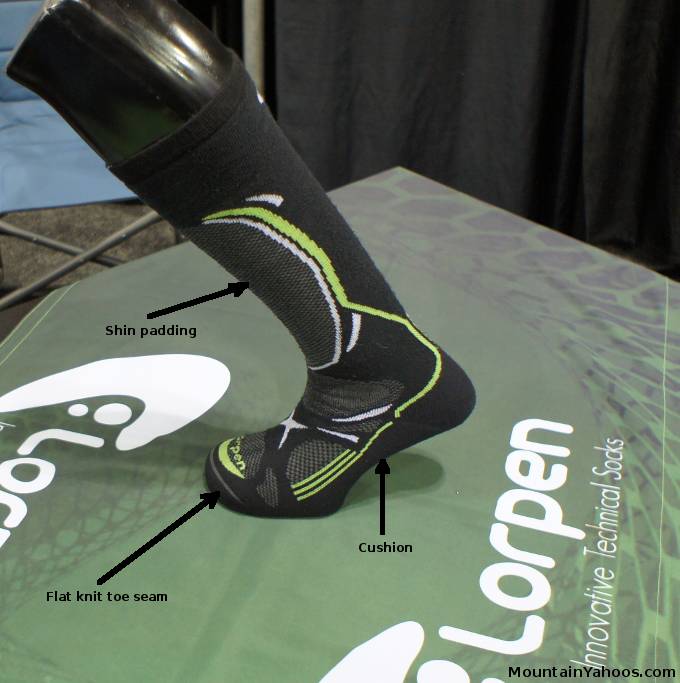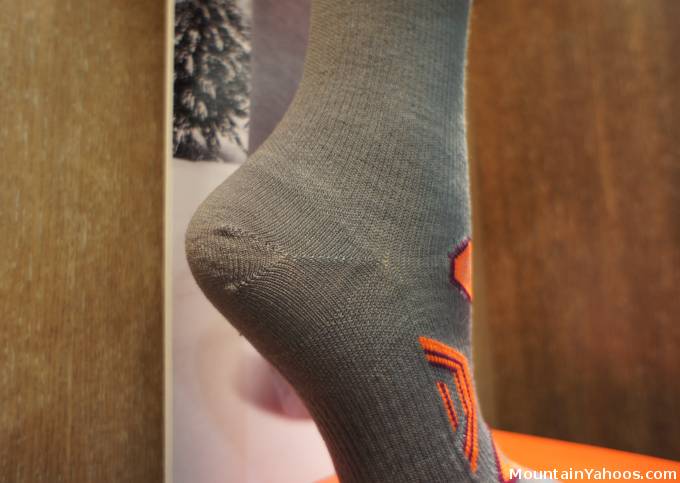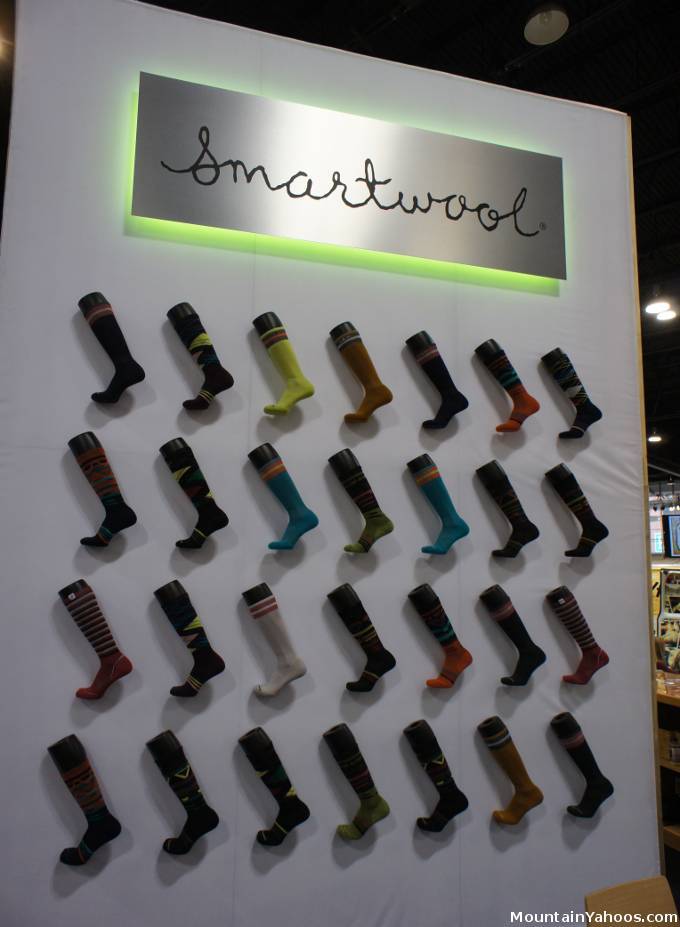Ski Socks
Performance footwear baselayer
| Skiing and Snowboarding require a sock which will insulate and keep the foot warm, wick sweat away from the foot to keep it dry, provide cushion to avoid abrasion but also not too thick so that boot maintains fit, control and responsiveness. |
Modern ski socks have allot of technical features for warmth, comfort (no seams or hard points), fit (so the sock does not droop or fall) and padding to mitigate abrasion and impact.
These are not your mothers socks.
Sock technology now includes seamless weaving, warming / cooling properties, fiber technology (Merino wool, Primaloft, Lycra, Tencel, Modal, ...), scent and odor blocking technology, compression and support, padding, insulation R-factor, venting, wicking, ...
When choosing a pair of ski socks, one should consider these factors.
Alpine Ski Sock Features:
- Materials and Fiber:
- Merino Wool: soft and warm. Excellent at regulating warmth, wicking sweat with natural antibacterial properties.
- Primaloft: synthetic insulation
- Lycra: (spandex) used to add elasticity to allow the sock to grip the calf so that it does not slide down and to improve fit to reduce motion and blistering.
- Nylon: sometimes added to improve strength and abrasion resistance.
- Cotton: Never! While typical for daily wear, cotton will retain moisture causing one's toes to become very cold as the sock becomes moist. Feet sweat constantly during athletic endeavors like skiing, making cotton a bad choice. Don't use your typical daily use socks, buy a pair of ski socks.
- Construction:
- Seamless: the seam can be seen visually but is not felt. The transition between fabric sections is smooth and maintains a constant thickness
- Compression: fabric is cut, oriented and stitched to apply pressure in an optimum fashion to add mechanical support. Movement of the foot and ankle are also supported optimally
- Weave: The fabric weave can be optimized. When extra cushion is required, a loop weave can be used which is thicker. A more spacious weave can be used to facilitate ventilation.
- Weight: Alpine ski socks typically come in lightweight, mid-weight and sometimes heavy weight forms. Lightweight socks are the thinnest and best for warm days or tight (low/no extra volume) boots. Medium or mid-weight is most typical and usually warm enough for most ski conditions. Heavy weight socks are reserved for the harshest of conditions requiring the extra insulation. Extra padding should be achieved by a sock construction which seeks to pad critical areas like the shin and ankle rather than going for a higher weight sock.
- Padding:
- Shin: Padding added to prevent boot bang (impact of shin with boot tongue).
- Padding can also be added to the ankle area to alleviate boot pressure which may apply a point pressure as the boot foam ages and gets stiff.
- Heel: padding can be added above the heel to help prevent heel lift
- Toe protection: top and metatarsal.

Lorpen mid-weight ski sock
Manufacturers Links:
- Darn Tough Vermont
- EC3D - orthopedic compression socks
- Lorpen
- Fits Socks (division of: Crescent socks)
- Smart Wool
- Stable26
- Voormi
- X-Socks
Darn Tough Vermont ski socks:
Darn Tough Vermont socks: product line and features
Review of their "Vertical" and "Function 5" lines. Blended Merino wool, Nylon and Lycra with flat knit toe construction, multi-density and cushion fabric optimized for alpine skiing.
Darn Tough Vermont socks: product line and features
Review of their "Vertical" and "Function 5" lines. Blended Merino wool, Nylon and Lycra with flat knit toe construction, multi-density and cushion fabric optimized for alpine skiing.
Fits ski socks:
Fits socks: Alpine product line and features
Ultra-light, light and medium weight construction with seamless knitting in the toe area. Vented rear with a padded shin to negate "boot bang".
Fits socks: Alpine product line and features
Ultra-light, light and medium weight construction with seamless knitting in the toe area. Vented rear with a padded shin to negate "boot bang".

Fits Y-stitch on the heel of the sock.
Lorpen ski socks:
Lorpen socks: product line and features
Merino wool blend with a cushioned foot base and flat knit toe seam.
Overview of Lorpen socks technology
Lorpen socks: product line and features
Merino wool blend with a cushioned foot base and flat knit toe seam.
Overview of Lorpen socks technology
Stable 26 ski socks:
Stable 26 socks: product line and features
Removable and customizable silicon pads for the ankle and shin.
Stable 26 socks: product line and features
Removable and customizable silicon pads for the ankle and shin.

Smartwool line of socks
- Heated ski socks (and other ski wear)
- Socks - Wikipedia



